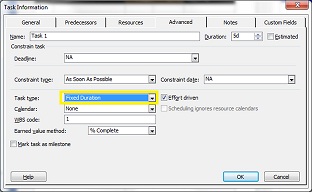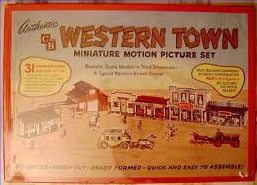At what point during an intense technical seminar do people start to weary and tune out? For me, that point almost came at the last hour of Day 3. As you know from my previous posts, I’m taking the Project Management Professional (PMP)® Certification Exam Boot Camp offered by ASPE SDLC Training. I got a direct mail piece one day, and just signed up. So here I am in Denver, taking the class. These are my personal experiences.
Okay… so I’ve lasted one hour shy of three days. All is well… I’m challenged… I’m getting it… I’m filling the notepad… but I’m starting to notice a peculiar feeling not hitherto experienced… exhaustion. Probably from burning the candle at both ends and sitting a pretty intense course. So I guess I’ll tune out, right? Slack off on the notes, let a few minutes of lecture gently ease over my head while I fake the Active Listening feedback. Sure, I could have done that.
But then came along Earned Value Analysis!
Bing! I woke right up! The next hour (and last one of the day) flew by like the very first ones had on Monday morning. Discussions of Earned Value and Planned Value and Actual Cost drove cobwebs from my weary brain. Then there were formulas for Cost Variance and Schedule Variance, and then Cost Performance Index and Schedule Performance Index, and further discussions of how SPI is only a defining value when taken from the Critical Path killed off the hour. (You gotta be a geek.)
Lesson learned: you have got to come into this class with some real interest in the project management process. Pick a topic: Scope? Time and Cost? QA or QC? How about Human Resources or Communications? Procurement? Pick one. Because without some natural interest, and some serious geekology (the study of geeks), you might not survive this Boot Camp. That’s what I realized today. I really like some of this stuff! Although I’m not sure why. But when certain topics come up, my heart leaps and I drill in extra hard for all the good stuff. I can honestly say, this course did not disappoint the geek within. Even on the last hour of the third day (there’s one more Day to go), Dave Caccamo did not slack up. Earned Value came forth with the same enthusiasm as Developing Project Charters and Identifying Stakeholders had on Day 1. That was a surprise. You would think he’d run out of steam like I had. Nope, not Dave.
Okay, changing subjects… I really get the feeling that PMI wants to weed out the deadbeats. A good portion of this course was raising the awareness of the heights to which PMI will go to trick exam-takers and would-be PMP’ers. If you don’t live for this stuff, they want you gone. The novice who has never taken a course like this would never know that… until they bombed the exam four times. I now know about twenty ways PMI could trip me up. Maybe that will help when sitting the exam. Hope so.
One more thing: I would have liked one improvement. I would somehow like to see special significance given to process inputs and outputs. After Day 3, I realized that from the dozens of processes, lists, phrases, formulas, and methods you read through, the process inputs and outputs seem to all blend in. You have to manually pick them out of the soup. I found it difficult to elevate them to a higher status that would help me instantly identify even though they were clearly listed on the slides. In other words, they didn’t stand out from the minutia. I know that sounds dumb, because there they were on the slides and flash cards. But it seemed like as we zoomed through the material, one list had equal standing with the next, and only by applied effort was I able to elevate the process inputs and outputs to the level they deserved for memorization. After all, you can’t memorize everything. You have to prioritize, and process inputs, outputs, tools, and techniques were the likely choice for me. I don’t have any suggestions for improvement; I’m just griping. I can do that, right?
So, there’s one more day left… I’m excited to complete this, but I’m also weary. Will I survive? Yeah, I think so. Will I tune out? Probably not, but you never know. But I know this will certainly stand out as a career highlight for me. I’ve gotten more knowledge in these few days than several years’ worth.
Check out ASPE. Great organization.
My Notes Taken on Day 3:
There are some useful “PMI thinks” rules that dictate input and outputs. Remember these rules and you can predict the inputs to any process. Dave Caccamo has developed these rules. Get from him.
There are so many trick questions that you can’t list them. Very numerous. Plus, all the wrong answers will be common things people think of based on the trick terminology. The subject material is hard enough without these shenanigans; tricks just put it over the top.
There are 50 “pretest” questions mixed into the test. You won’t know which questions count toward the results and which don’t. Pretest questions don’t count. They are used by PMI to decide if the question will eventually be put into the real questions.
Drink the Kool-Aid.
I found it difficult to remember where each process input was produced. Which process produced it? Sometimes they abstracted by other process outputs. Outputs do not always go directly to inputs. I would like to see a computer rubber band model that traced inputs to the processes that created them.
By now memorization should be giving way to logic. Inputs should be predictable. Problem is, there’s so much information that needle-sized outputs are hard to pick out of the haystack. Actually, I’m not even sure if all inputs are outputs of other processes. Maybe some are from external sources.
Fog of war.
I admire people who hold forth well beyond my comfort level. How do they do that?
Links to previous ASPE PMP Boot Camp posts
Disclaimer: The thoughts and feedback for the ASPE PMP Certification Exam Boot Camp associated with this series of posts are my own. In exchange for providing my feedback on this community forum, ASPE has provided benefits related to my course attendance.







